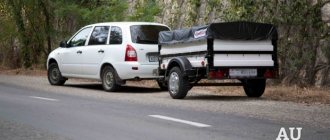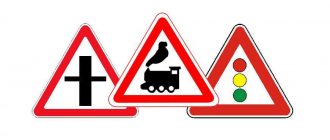Acceptable truck sizes in Europe
| A country | A | B | B.G. | CH | D | DK | E | E.G. | F | G.B. | GR | G.U.S. | H | I | IRL | L | N | NL | P | P.L. | R | S | SF | TR |
| dimensions (meter) | ||||||||||||||||||||||||
| Height | 4 | 4 | 4 | 4 | 4 | 4 | 4 | 4 | 4 | 4,2 | 4 | 4 | 4 | 4 | 4,25 | 4 | — | 4 | 4 | 4 | 4 | 4,5 | 4 | 4 |
| Width (standard truck) | 2,5 | 2,55 | 2,5 | 2,5 | 2,5 | 2,55 | 2,55 | 2,5 | 2,55 | 2,5 | 2,55 | 2,5 | 2,5 | 2,55 | 2,5 | 2,6 | 2,55 | 2,6 | 2,55 | 2,5 | 2,5 | 2,6 | 2,6 | 2,5 |
| Width (reefer) | 2,6 | 2,6 | 2,5 | 2,6 | 2,6 | 2,6 | 2,6 | 2,6 | 2,6 | 2,6 | 2,6 | 2,5 | 2,5 | 2,6 | 2,6 | 2,6 | 2,6 | 2,6 | 2,6 | 2,5 | 2,6 | 2,6 | 2,6 | 2,5 |
| Truck length | 12 | 12 | 12 | 12 | 12 | 12 | 12 | 12 | 12 | 12 | 12 | 12 | 12 | 12 | 12 | 12 | 12,4 | 12 | 12 | 12 | 12 | 12 | 12 | 10 |
| Trailer length | 12 | 12 | — | — | 12 | — | 12 | 12 | 12 | 12 | — | — | — | 12 | 12 | 12 | 12,4 | — | 12 | 12 | 12 | 12 | 12,5 | 16 |
| Truck train length | 16 | 16,5 | 16,5 | 16,5 | 16,5 | 16,5 | 16,5 | 16,5 | 16,5 | 16,5 | 16,5 | 20 | 16 | 16,5 | 16,5 | 16,5 | 17 | 16,5 | 16,5 | 16,5 | 16,5 | 24 | 16,5 | 16 |
| Train length | 18 | 18,75 | 22 | 18,35 | 18,75 | 18,5 | 18,75 | 18,75 | 18,75 | 18 | 18,75 | 20 | 18 | 18,75 | 18,75 | 18,75 | 18,5 | 18,75 | 18,75 | 18 | 18,75 | 24 | 18,75 | 18 |
| Three axle bus length | 12 | 12 | 12 | 12 | 12 | 12 | 12 | 12 | 12 | 12 | 12 | 20 | 12 | 12 | 12 | 12 | 12,4 | 12 | 12 | 12 | 12 | 12 | 14,5 | 12 |
| Articulated bus length | 18 | 18 | 16,5 | 16 | 16,5 | — | 18 | — | 16,5 | 18 | 18 | 20-24 | 18 | — | — | 18 | 18 | 18 | — | 22 | 18 | — | 14,5 | 18 |
Length - road train
The projector height of the new truck tire
The length of the road train should not exceed 24 m for a tractor unit with multiple trailers and 20 m for a tractor unit with one trailer.
When the length of a road train is over 20 m, it is recommended to install an identification plate indicating the actual length of the train on the rear side or a special panel mounted at the end of the vehicle.
To reduce the length of the road train during transportation, the boom is folded or the head section of the boom is disconnected and transported separately.
| Unified cabin -.| Cranes of the 3rd size group. |
To reduce the length of the road train during transportation, the boom is folded or the head section of the boom is disconnected and transported separately.
| Dependence of the possible utilization factor of the carrying capacity Kg of trailed (solid lines and saddle (dashed lines) road trains on the length. |
KL of the useful use of the length of a road train indicates a more rational use of the overall length of trailed road trains, despite the fact that their overall length is longer than that of semi-trailer road trains. At the same time, the large overall length of trailed road trains is due to the larger total length of the tractor and trailer platforms, which provides, as shown above, higher values of the load capacity utilization factor.
The disadvantage of this method of transportation is the increase in the length of the road train, which limits the use of the method when transporting long vehicles.
On single-lane roads, two-way traffic is ensured by the construction of sidings with a useful length of at least the length of the design road train, located within visibility, but not less than 500 m from each other. The width of the roadbed and roadway at the sidings is taken as for two-lane roads. Transition from single-lane to double-lane width on.
| Universal sliding semi-trailer-balk carrier UPR-1212. |
The ease and insignificant time required for changing the length of sliding semi-trailers makes it possible to reduce the length of the road train during empty runs or when transporting products less than 12 m, which increases the average technical speed of the vehicle and facilitates the driver’s work, especially on sections of roads with heavy traffic.
In terms of dimensions, construction loads are: overall, fitting into the permissible dimensions for highways - width 2-5 m, height 3-8 m, length of the road train no more than 24 m; for railway transport gauge 1524 mm (according to GOST 9238 - 83) and oversized - exceeding these indicators.
Until 1991, the main limitation for increasing the unit weight of the capacity of tank trucks used on general roads was the total weight allowed by road standards (no more than 38 tons), axle loads, and the length of the road train.
Characterizes the use of the vehicle's carrying capacity based on the size of the platform. The coefficient of useful use of the length of the road train KL...
In accordance with the requirements of traffic regulations, transportation along a certain route can only be carried out with a special permit issued by the State Traffic Safety Inspectorate. The height of the load above the surface of the roadway must be no more than 4-5 m and must be agreed upon with communications services. If there are railway crossings on the route, if the dimensions of the vehicle with or without cargo exceed 5 m in width, 4-5 m in height above the roadway surface, 20 m in length of the road train with one trailer (semi-trailer), and the total actual weight of the vehicle exceeds 52 tons and travel speed is less than 5 km/h, coordination with the railway track distance is also required.
What's the result?
As you can see, the concept of vehicle mass may differ. It is important to understand exactly what weight of the car we are talking about in each specific case (curb, gross, permitted, dry weight, calculated, nominal, etc.). At the same time, the above information allows you to better understand this issue, which in certain situations eliminates common mistakes.
We also recommend reading what car engine torque is. From this article you will learn about the difference between internal combustion engine power and torque, as well as what these parameters influence.
Finally, we note that many cars, both cars and trucks, have special plates on the body. These signs often provide useful information about what tire pressure should be maintained, as well as what the gross vehicle weight is.
This data makes it possible to increase safety when transporting passengers and cargo, and it is also possible to more accurately understand how much cargo can be transported in a particular car, adjusted for the characteristics declared by the car manufacturer in terms of carrying capacity. In turn, this will allow you to avoid accidentally overloading the car and premature breakdowns or severe wear and tear on the components and assemblies of the vehicle.
Movement - road train
Features of transportation of oversized cargo
The movement of the road train cannot begin until the pressure warning lamps in the brake system circuits go out.
The movement of road trains during transportation using the traction arm system is organized according to hourly schedules. Traffic schedules are drawn up taking into account road conditions and the time spent on interconnecting semi-trailers at the end points of the traction arm. Travel speeds should be reduced in the autumn-winter period due to reduced daylight hours and worsening meteorological conditions. After developing a traffic schedule, to clarify it, a test run of the road train with a full load is carried out under the supervision of the commission. Then the traffic schedules are approved and a traffic schedule on this road is drawn up, which indicates the days and times of arrival and departure of road trains for each point.
The movement of a road train is associated with an increase in rolling and air resistance forces. Imperfection of the turning devices and gaps in the coupling devices lead to the fact that the trajectory of the trailer or semi-trailer does not coincide with the trajectory of the tractor. When moving at high speed, angular vibrations of trailers occur in the horizontal plane, and when the speed of the tractor changes, longitudinal jerks and impacts occur.
The movement of road trains towards each other must be calculated so that they arrive at the end points of their traction arms at the same time. After re-coupling semi-trailers and a short rest, drivers can continue driving in the opposite direction.
The driving conditions of a road train around a turn differ significantly from those of a car. The difference is that the smallest internal overall radius of turning of a trailer is smaller than the smallest internal overall radius of a car or towing vehicle, and this radius is smaller for a single-axle trailer than for a two-axle one. Therefore, in order to determine the width of the passage sufficient to turn the road train, it is necessary to know the smallest outer overall radius of the car or tractor and the smallest inner radius of the last trailer in the road train.
The speed of a road train must be lower than the speed of a single vehicle. Before reversing the road train, you need to lock the front axle of the trailer with a locking device.
When a road train moves through intermediate points of the route, the transported cargo is unloaded and new cargo is loaded. In this case, upon arrival at the destination, the driver receives invoice orders for additional loading of the road train at the route control center and then proceeds to the warehouses of the consignee or consignor. After completing the travel documentation, the driver, according to the established schedule, goes to the next point of the route.
| Turning the road train. a - rotation diagram. b - influence of the operating coefficient. |
When a road train moves in passages limited on both sides, for example, a gate, an intersection, the outer component An affects the width of the entrance passage, and the internal component Dv affects the width of the exit and entry passages. When turning a road train on a free site, when there are no obstacles from the center of the turn, the value of A does not affect the width of the site.
When a road train is moving as part of a tractor-trailer with a trailer (semi-trailer), the amount of lateral vibration (wobble) of the trailer relative to the tractor-vehicle in each direction should not exceed 3% of its overall width.
| Technical characteristics of tractor pipe haulers. |
When moving a road train with a long load in mountainous areas, it is important to ensure that the vehicle passes without the load touching the ground. The route of movement of pipe transport vehicles often runs along a complex profile of dirt roads with descents, ascents and other irregularities that impede the movement of vehicles with long loads. . The movement of overly long road trains is also not allowed, as this causes danger when overtaking, passing and maneuvering.
The movement of overly long road trains is also not allowed, as this causes danger when overtaking, passing and maneuvering.
When developing routes for road trains in rough or mountainous terrain, it is necessary to perform a dynamic calculation of the vehicle, showing the possibility of moving a road train at a given speed in the most difficult places and the highest inclines.
Thus, for the road train to move, it is necessary that the traction force on the mover overcome all the above resistances.
What is considered oversized cargo?
Kia Optima 2021 will receive body restylingPost navigation
It includes types of cargo, the size and weight of which exceed the values established by traffic regulations that apply to items permissible for transportation. Based on Russian laws, the following can be classified as cargo of this type:
- protruding in front and behind vehicles by more than 100 cm;
- protruding from the edges of the vehicle by more than 40 cm.
The calculation is carried out regardless of the dimensions of the machine itself. Thus, if, when transported on a light-duty truck, the cargo protruding beyond its limits will be defined as oversized, when transported by a long truck, it will be classified as a regular type of cargo.
Trailed road train
Trailed road trains with one trailer operate reliably in various operating conditions, have a fairly high speed, good maneuverability and stability.
In trailed road trains, the weight of the trailed link and the payload is completely transferred to the road through its wheels. Road trains constructed according to a mixed principle are also often used. Diagrams of some types of road trains are shown on the rgs.
For trailed road trains, it is assumed that the drawbar is located parallel to the plane of the road; for semi-trailer road trains hn is equal to the height of the upper plane of the fifth wheel device, parallel to the road plane, from the road plane.
| Estimated width Bk of the corridor depending on the base B of trailed (solid lines and saddle (dashed lines) road trains at different turns a. |
The EOD for trailed road trains decreases, and for saddle trains it increases.
| Estimated width Bk of the corridor depending on the base B of trailed (solid lines and saddle (dashed lines) road trains at different turns a. |
One of the parameters when evaluating fifth-wheel and trailed road trains is maneuverability. The maneuverability of the road train (the width of the Bk corridor) is mainly influenced by the overall length of the road train, which depends on the length of the platform.
For a more correct comparative assessment of semi-trailer and trailed road trains, it is necessary to select such internal dimensions of the platforms that would allow the coefficient of utilization of the nominal load capacity to be brought closer to unity for the main types of transported goods. In this case, certain difficulties arise due to the large number of main cargoes transported by road, which vary significantly in volumetric weight. In order to select the most frequently transported cargo, containers and pallets, requests were made to individual research and operational organizations, republican ministries, and data on cargo transported during trial operation and acceptance testing of MAZ vehicles and road trains was also used.
| Dependence of the possible utilization factor of the carrying capacity Kg of trailed (solid lines and saddle (dashed lines) road trains on the length. |
Consequently, with regard to the coefficient of utilization of carrying capacity, trailed road trains have an advantage over fifth-wheel trains. It should also be taken into account (see Table 9); that the nominal load capacity of trailed road trains is 9 7 - 15 2% higher than that of saddle trains.
| Dependence of the possible utilization factor of the carrying capacity Kg of trailed (solid lines and saddle (dashed lines) road trains on the length. |
KL of the useful use of the length of a road train indicates a more rational use of the overall length of trailed road trains, despite the fact that their overall length is longer than that of semi-trailer road trains. At the same time, the large overall length of trailed road trains is due to the larger total length of the tractor and trailer platforms, which provides, as shown above, higher values of the load capacity utilization factor.
As can be seen from Fig. 14, the coefficient of utilization of the carrying capacity KE depending on the length of the platforms LnJI of trailed road trains is higher than that of saddle trains.
| Dependence of the possible utilization factor of the carrying capacity Kg of trailed (solid lines and saddle (dashed lines) road trains on the length. |
KL of the useful use of the length of a road train indicates a more rational use of the overall length of trailed road trains, despite the fact that their overall length is longer than that of semi-trailer road trains. At the same time, the large overall length of trailed road trains is due to the larger total length of the tractor and trailer platforms, which provides, as shown above, higher values of the load capacity utilization factor.
What is acceptable
The permissible load of a vehicle is the sum of all loads on its axles. There are two classifications of trucks:
| Group A | use of transport only on routes I, II and III categories |
| Group B | legal for use on all roads |
Depending on the group, different permissible load sizes are established:
| Gap between axles, m | Permissible load for axle group A | Permissible load for axle group B |
| More than 2x | 10 | 6 |
| 1,65-1,2 | 9 | 5,7 |
| 1,65-1,35 | 8 | 5,5 |
| 1,35-1 | 7 | 5 |
| Less than 1st | 6 | 4,5 |
Legislation establishes overload limits for trucks:
| Number of axes | Overload limit, t |
| 2 | 18 |
| 3 | 25 |
| 4 | 32 |
| 5 | 35 |
If the weight of the transported cargo is increased, its owner must take the following actions:
- obtain permission to transport cargo;
- inform the route of the trip;
- pay compensation for damage to the road surface.
Overloading a car causes damage to the road surface and can also lead to an accident, since a heavy vehicle skids easily, takes longer to brake and can roll over.
To compensate for damage to the road surface, if there is overload, this must be reported and a certain amount paid.
If this point is ignored, the driver of the vehicle may be fined for overloading, and in cases with very heavy weight, he may be deprived of his license.
Therefore, it is important before the trip to check whether the weight in the documents corresponds to the actual weight, since non-compliance is also punishable by a fine, and responsibility for overload lies primarily with the driver.
The amount of the fine for overloading a car is shown in the article: fine for overloading a car. About deprivation of rights for overload, see the page.
Find out where and how to check fines for overloading a truck from this information.
Basic rules for the transportation of oversized cargo
The integrity of the cargo itself, the safety of transport and other road users depend on compliance with transportation rules.
Therefore, it is extremely important to follow all recommendations to ensure safety and fast delivery.
When delivering heavy oversized cargo, it is necessary to take into account the permissible load on the vehicle axles. It is important to consider the correspondence between the weight of the cargo and the maximum load capacity of the vehicle. When a car is overloaded, wear on the engine, frame, chassis and wheels increases, and steering efficiency decreases.
This creates a risk of an accident. Maximum attention should also be paid to the quality of fastening and the location of the cargo in the body. If it is in an unstable position, there is a risk of the load falling or the vehicle overturning. When delivered, transported items must not pollute the environment or the road surface or be sources of increased noise. It is unacceptable to cover reflective and lighting devices or vehicle license plates with the cargo or part of it.
Delivery of large cargo should be carried out by specialized companies - only in this case can you be sure of its efficiency and safety. Freight taxi "Gazelkin" offers transportation of oversized cargo by various types of vehicles. The experience and professionalism of the company's employees is a guarantee of high quality work.
When can you challenge a fine for overloading?
Based on judicial practice, it is very difficult and often impossible to cancel a fine. Judicial authorities, as a rule, do not delve into the situation and fully satisfy all claims and demands of the traffic police. However, there are situations in which appealing a protocol on an administrative offense is quite realistic:
- The owner received a fine, and the vehicle was rented to another person;
- The cargo was transported for personal, not commercial purposes. In this case, the fine will be the minimum;
- The vehicle was loaded with bulk or liquid cargo. Provided that the maximum permissible weight is not exceeded, the fine for overloading the axles can be canceled due to the absence of an offense, since the cargo could have moved during transportation;
- Several posts recorded a violation, but the first of them did not detect an overweight on the axle; this indicates that during loading all weight standards were met, but during transportation there was a displacement of the cargo and, accordingly, a load on the axle.
The services of a property lawyer will allow you to free yourself from unpleasant burdens and worries, guarantee a professional solution to the issue, and also contribute to a favorable outcome in court proceedings.
Requirements for the dimensions of a road train. Ways to increase the carrying capacity of a road train.
In all countries of the world, the length of a road train is strictly limited. In Europe, EU Directive 96/53 is in force, according to which the length of a semi-trailer, i.e. a tractor with a semi-trailer, should not exceed 16.5 m. The length of the semi-trailer itself is also limited: from the fifth wheel to the end of the semi-trailer no more than 12 m, and the distance from the SSU to the front of the road train should not exceed 2.04 m. Based on these conditions, standards for semi-trailers were formed. Thus, a road train with a two-axle truck tractor with a 4x2 wheel arrangement and a three-axle semi-trailer has a length of 13.6 m. But a three-axle tractor with a 6x4 wheel arrangement can also be used. The length of such a vehicle must still comply with size standards. Three-axle models are often used as chassis for construction, dump trucks and special equipment.
In Russia, the length of a road train can reach 20 m; here, restrictions on vehicle dimensions depend on the type of road train. Thus, the length of a Euro tractor with a Euro trailer should not exceed 16.5 m. The length of a Euro tractor with an American semi-trailer should be no more than 18 m. The length of a track with a Euro trailer can be within 18-20 m. The longer the length tractor, the longer the length of the entire road train can be. There are semi-trailers whose length reaches 16 m, but in order to meet established standards, they can only be used in tandem with cabover tractors.
Of course, there are also requirements for lighting a road train at night. In addition to standard systems and reflective stickers, many owners of long road trains also use LED lighting for the perimeter of the vehicle. This solution allows, with a significant reduction in energy consumption costs, to make the transportation process as safe as possible.
In addition to restrictions on the length of the road train, there are standards for the load on the fifth wheel, the width of the vehicle, the total weight and the level of exhaust toxicity. So, for example, the weight of a road train with five axles should not exceed 40 tons, with six axles - 52 tons. The width of the vehicle should not be more than 2.5 m, and the height - no more than 4 m. A road train, which consists of three links, should not be more than 24 m.
In order to "fit" into the requirements, both manufacturers and carriers are looking for ways to solve the problem, because everyone strives to make freight transportation more efficient. For example, tracks are used in conjunction with shortened semi-trailers, for example, for 20-foot containers. At the same time, semi-trailers for 40-foot containers are used with tractors with a shortened chassis.
To increase the productivity of freight vehicles, carriers use three-unit road trains. This arrangement makes it possible to provide the necessary carrying capacity, while keeping the total weight at an acceptable level. A three-link arrangement is possible through the use of shortened coupling devices, since the distance between the trailer and the tractor is reduced. When using add-ons that allow you to move the berth above the cabin, the length of the cabin itself is reduced, while the useful length increases, so you can get an additional 50-80 cm. To increase the useful volume of the cargo compartment for curtain-sided or curtain-sided semi-trailers, carriers use low-profile tires, complete the road train with low-bed semi-trailers or semi-trailers with a stepped floor.
On what basis can an administrative penalty be applied?
Even a slight increase in side height, which has not been agreed upon with the manufacturer or has not passed a specialized assessment (test), will be considered an unauthorized design change that may affect traffic safety.
There is a list of faults in the Appendix to the Traffic Regulations with which the operation of the vehicle is not permitted. The following point is noted in paragraph 7.18:
A problem with some sailing yachts is that the lower edge of the ballast keel is not horizontal, but at an oblique angle. If the yacht is now positioned horizontally on the keel, it is only resting on part of the keel and experiences excess weight forward or aft, which is likely to only go into the side supports. In this case, indentations and damage to the disc flame by the supports can easily occur, even if they have a sufficiently large contact surface. In this case, it is necessary to ensure that the keel is subjected to an even load along its entire length, which leads to the relief of the rear trailers.
7.18. Changes have been made to the design of the vehicle without permission from the State Road Safety Inspectorate of the Ministry of Internal Affairs of the Russian Federation or other bodies determined by the Government of the Russian Federation.
A car with such design changes can be registered only in cases where there is documentary confirmation by the manufacturer of the possibility of such an upgrade, or an examination has been passed and a certificate of conformity has been received. Until such documents are received, operation of the vehicle will be prohibited.
Top and collapsible components must be disassembled and transported to a suitable location to minimize transport height. As a rule, this is the support bracket of a motor yacht device, but, of course, the mast of a sailing yacht. These parts are usually stored on board the yacht, in some cases, but also on a trailer. Proper dismantling and reassembly are just as important as transportable packaging and securing of bulk components, protection against slipping, chafing and possibly also against contamination and moisture.
In extreme cases, even dismantling the ballast may require lowering the transport height, a complex job that usually requires the use of a competent specialist shipyard. Finally, proper tying is essential to ensure a strong connection to the truck trailer. In particular, straps that are directed downward, particularly diagonally, are indispensable, which are designed to prevent the yacht from being pushed forward or to the side. Securing a large boat on a truck trailer is basically the same as a boat on a trailer, but the dimensions need to be larger.
All this is also true for other devices that allow you to hold cargo in the back of a car. For example, the fine for stripes on the sides of KAMAZ trucks in 2021 will be equal in size to the administrative penalty associated with changing the height of the side using constructive means.
Danger of overload
Overloading a vehicle is very dangerous not only due to increased wear and tear on the vehicle itself or damage to the cargo it transports, but it can cause irreparable harm to other road users.
The traffic police carefully monitors the degree of load of vehicles on the road surface; in case of overload, it may break, and the old pavement and bridges will suffer. If the vehicle is overloaded, the vehicle may skid and, as a result, roll over.
When braking, the path lengthens, which also poses a danger to all road users.
Overload is checked using dynamic or static testing.
Terms used in transport documents
- “Truck” is a vehicle equipped with a mechanical drive. Operated for transporting goods by road;
- “Vehicle” is a device on which cargo or passengers are installed for their transportation on roads;
- “Road train” is a combined vehicle consisting of a truck and trailer (trailer train), tractor and semi-trailer (trailer train);
- “Tractor” – a vehicle equipped with its own engine and intended exclusively or primarily for towing a trailer or semi-trailer;
- “Combined vehicle” – a combination of a car and a trailer (semi-trailer);
- “Full trailer” trailer with drawbar - a towed vehicle having at least two axles, of which at least one axle is steerable and, in addition: - equipped with a towing device (drawbar) that has the ability to be vertical in relation to to the moving tractor; - not transmitting any significant vertical load to the tractor (no more than 100 daN). When a semi-trailer is coupled to a semi-trailer undercarriage, it is considered a full trailer;
- “Semi-trailer” is a towed vehicle that is designed to be connected to a truck tractor (or to the support bogie of a semi-trailer) and transfers a significant vertical load to the tractor’s coupling device (or to the support bogie of a semi-trailer);
- “Semi-trailer undercarriage” – A trailer with a center axle and equipped with a fifth-wheel hitch.
- “Maximum length of a vehicle” – the length of a vehicle that does not exceed the established permissible values (different for each country);
- “Maximum vehicle width” – the width of the vehicle, which does not exceed the established permissible values (different for each country);
- “Maximum height of the vehicle” – the height of the vehicle, which does not exceed the established permissible values (different for each country);
- “Maximum vehicle weight” – the weight of a vehicle with or without cargo, which does not exceed the established permissible values (different for each country);
- “Maximum axle mass” – the mass transmitted through the vehicle axle to the surface of the road, which does not exceed the established permissible values (for each country);
- “Weight of a vehicle in running order” is the weight of an unladen vehicle with a body and a coupling device in the case of a bus-tractor, or the weight of a chassis with a cab, if the manufacturer does not install a body, and/or a coupling device. This weight includes coolant, oils, at least 90% fuel, 100% other fluids (excluding used water), tools, driver (75 kg), and spare tire.
- “Technically permissible maximum weight of a vehicle” is the maximum weight of a vehicle, determined by its design and specified characteristics, established by the vehicle manufacturer.
- “Indivisible cargo” – cargo that cannot be divided during transportation due to the risk of damage or high costs of time and money;
- “Air suspension” is a suspension system in which the shock-absorbing element is air, providing at least 75% of the shock-absorbing effect;
Permitted vehicle weight: what you need to know
Separately, it should be noted that according to traffic regulations, the permissible maximum mass of a road train should be understood as the sum of the maximum permissible masses in its composition.
It is also necessary to pay attention to the fact that for trucks the governments of different countries (including in the CIS) have introduced certain restrictions regarding the maximum permitted weight. Such measures are aimed at maintaining the integrity of the road surface. For example, the permissible maximum weight of a truck that is used to transport divisible cargo and is operated on public roads must be no more than 40 tons.
Special permission
In order to carry out activities related to the transportation of oversized cargo, it is necessary to obtain a special permit, which specifies specific dimensions, delivery conditions, route, etc. This procedure came into force on the basis of Federal Law No. 257 of November 8, 2007 “On Highways”, which states the prohibition of transporting heavy goods , large-sized and dangerous goods without special permits. The route is agreed upon with the authorized government agency.
The paper is issued for one or several trips, but cannot exceed more than 10. The route and the cargo transported must match each time. The validity period of the permit does not exceed 3 months.
Transportation of oversized items is impossible in organized convoys; this can lead to an emergency situation.
The procedure for oversized cargo transportation is regulated by the following documents of the Russian Federation:
- Federal Law No. 127 of July 24, 1998 “On state control over international transportation.”
- Federal Law No. 259 of November 8, 2007 “Charter of Motor Transport”.
- Decree of the Government of the Russian Federation No. 72 of April 15, 2011 “Rules for cargo transportation by road.”
- Traffic regulations approved on October 23, 1993
- Standards for issuing special permits, approved by Order No. 258 of the Ministry of Transport of the Russian Federation dated July 24, 2012.
- Transportation safety standards approved by Order No. 7 of January 15, 2014 by the Ministry of Transport of the Russian Federation.
Permission to transport oversized items is issued for no more than 10 trips
Registration of a special permit
When carrying out oversized transportation, it is imperative to obtain permission to transport cargo exceeding the norm, which will indicate the permissible excess weight or axle load of more than 2%. The transport route must be agreed upon and payment must be made for the damage that will be caused to the roadway during such transportation.
To obtain a permit, you must submit an appropriate application with a package of necessary documents to the traffic police, agree on the route, and pay the fee.
A complete list of required documents can be found at your local traffic police office; below is a standard list:
- A copy of the identity card or state registration certificate (for legal entities);
- A copy of the registration certificate and a copy of the vehicle passport;
- The travel route, which has been previously agreed upon by the responsible authorities (road department, administration and others);
- A copy of the rental agreement, leasing, targeted lending for a car, if necessary;
- Documents establishing the dimensions and weight of transport.
The cost of such a permit reaches 20 thousand rubles - not such a large amount, especially in comparison with fines in the absence of such a permit. Much depends on the distance of the route, the type of vehicle and the weight.
The traffic police has the right to refuse to issue a permit, the grounds may be:
- Delay in payment of state duty;
- Lack of necessary documents;
- Exceeding the weight of the cargo by more than 20% of the total weight of the vehicle.
Such a refusal is issued in writing; if desired, you can challenge it in court. In any case, you can submit the documents again, correcting all the shortcomings made the first time.
Permissible weight of a road train in Russia. Maximum axle load in Russia.
!!!!!!!!
Decree of the Government of the Russian Federation No. 1529 of December 12, 2017 amends Decree of the Government of the Russian Federation of April 15, 2011 N 272 “Permissible load on a vehicle axle.”
According to the new amendments, which come into force on December 22, 2017, the following changes are made for a standard truck tractor (two-axle tractor with dual wheels on the drive axle) and a standard semi-trailer (three-axle semi-trailer with a distance between the axles from 1.3 m to 1.8 m ):
| Axis | Load in tons for roads with a maximum load of 10 tons: |
| 1 tractor axle (driven) | 9 |
| 2nd tractor axle (drive) | 10 |
| three-axle semi-trailer | 22.5 but not more than 9 per axle |
A single error for all scales is also set at 2%.
When a violation is detected at the border (including the border between the Republic of Belarus and the Russian Federation), the transport inspection does not have the right to issue a fine. Instead, the driver is presented with three possible options:
- return back to a neighboring country;
- eliminating the violation on site;
- special design permits for the transportation of heavy cargo.
Penalty for axial overload:
According to Article 12.21.1 of the Code of Administrative Offenses No. 195-FZ dated December 30, 2001 (as amended on February 5, 2018):
| Excess axial load from 2% to 10% | Fine from 100 thousand to 150 thousand, and if a violation is automatically recorded, 150 thousand |
| Exceeding axial load from 10% to 20% | Fine from 250 thousand to 300 thousand, and with automatic recording of violations 300 thousand |
| Exceeding axial load from 20% to 50% | Fine from 350 thousand to 400 thousand, and with automatic recording of violations 400 thousand |
Appendix No. 2 to the Rules for the transportation of goods by road (as amended by Decree of the Government of the Russian Federation No. 12 of January 9, 2014)
Permissible axle loads of vehicles
| Distance between adjacent axes (meters) | Permissible axle loads of wheeled vehicles depending on the standard (calculated) axle load (tons) and the number of wheels on the axle | |||
| for highways designed for an axle load of 6 tons/axle (*) | for highways designed for an axle load of 10 tons/axle | for highways designed for an axle load of 11.5 tons/axle | ||
| Single axes | 5,5 (6) | 9 (10) | 10,5 (11,5) | |
| Twin axles of trailers, semi-trailers, trucks, tractor units, truck tractors with the distance between the axles (load on the bogie, sum of axle masses) | up to 1 (inclusive) | 8 (9) | 10 (11) | 11,5 (12,5) |
| from 1 to 1.3 (inclusive) | 90 (10) | 13 (14) | 14 (16) | |
| from 1.3 to 1.8 (inclusive) | 10 (11) | 15 (16) | 17 (18) | |
| from 1.8 or more | 11 (12) | 17 (18) | 18 (20) | |
| Triple axles of trailers, semi-trailers, trucks, tractor units, truck tractors with the distance between the axles (load on the bogie, sum of axle masses) | up to 1 (inclusive) | 11 (12) | 15 (16,5) | 17 (18) |
| up to 1.3 (inclusive) | 12 (13,5) | 18 (19,5) | 20 (21) | |
| from 1.3 to 1.8 (inclusive) | 13,5 (15) | 21 (22,5 **) | 23,5 (24) | |
| from 1.8 or more | 15 (16) | 22 (23) | 25 (26) | |
| Closed axles of trucks, tractor-trailers, truck tractors, trailers and semi-trailers with more than three axles at a distance between the axles (load per axle) | up to 1 (inclusive) | 3,5 (4) | 5 (5,5) | 5,5 (6) |
| from 1 to 1.3 (inclusive) | 4 (4,5) | 6 (6,5) | 6,5 (7) | |
| from 1.3 to 1.8 (inclusive) | 4,5 (5) | 6,5 (7) | 7,5 (8) | |
| from 1.8 or more | 5 (5,5) | 7 (7,5) | 8,5 (9) | |
| Close axles of vehicles with eight or more wheels on each axle (load per axle) | up to 1 (inclusive) | 6 | 9,5 | 11 |
| from 1 to 1.3 (inclusive) | 6,5 | 10,5 | 12 | |
| from 1.3 to 1.8 (inclusive) | 7,5 | 12 | 14 | |
| from 1.8 or more | 8,5 | 13,5 | 16 |
(*) If the owner of the highway installs the appropriate road signs and posts information on the axle load of the vehicle permissible for the highway on its official website. (**) For vehicles with single wheels equipped with pneumatic or equivalent suspension.
Notes:
- Values in parentheses are for dual-pitch wheels, outside brackets are for single-pitch wheels.
- Axles with single and dual wheels, combined into a group of adjacent axles, should be considered as adjacent axles with single wheels, with the exception of a two-axle bogie with an unloaded axle.
- For tandem and triple axles structurally combined into a common bogie, the permissible axle load is determined by dividing the total load on the bogie by the appropriate number of axles.
- The permissible axle load for a two-axle cart with an unloaded axle is taken to be equal to the ratio of 60 percent of the permissible load on a two-axle cart for the driving axle and 40% for the unloaded axle.
Help from a lawyer regarding fines for overloading
Transport companies are much more likely to receive a fine for violating the permissible load values on a vehicle and its axles than entrepreneurs or individuals. If the former can afford a special lawyer on staff who deals with the resolution of these situations, then individual entrepreneurs or private owners have to independently collect documents, delve into the intricacies of legal acts, and attend courts.
Legal assistance from a qualified specialist will help you get rid of all the hassle associated with a fine for overloading, significantly reduce its size or cancel it altogether in a short time.
The appeal period is up to 10 working days from the date of transfer of all documents to the lawyer.
Our advantages: · More than 9 years of legal practice; · Saved carriers and shippers a total of more than 40 million rubles; · We do not make empty promises, we identify all risks; · Affordable conditions and convenient service.
What are the dimensions of oversized cargo for transportation?
Guided by the provisions of the traffic rules, unaccompanied transportation of objects is possible only with the following dimensions of cargo vehicles (both loaded and unaccompanied):
- height no more than 4 meters;
- length up to 20 meters;
- width up to 2.55 meters.
Taking into account the dimensions of the cabin and chassis of trucks, the capacity of standard transport is functionally limited to the following dimensions:
- height 2.55 m;
- length 13.6 m;
- 2.55 m wide.
Any type of cargo whose dimensions exceed the specified limits is classified as oversized. This includes a load protruding by the above amounts in full or in separate parts.
When transporting oversized cargo, it is necessary to use a special identification sign “Oversized cargo”.











